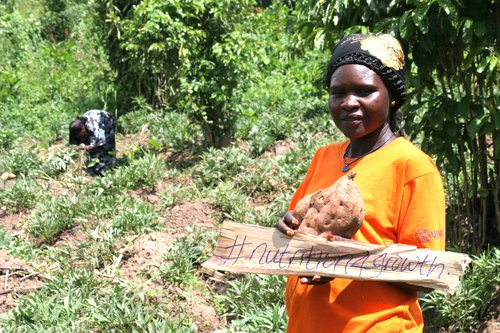The Nutrition for Growth Commitments
World leaders are gathering today in Rio de Janeiro to highlight progress made since the first Nutrition for Growth (N4G) Summit in 2013, and to reaffirm their commitment to ending malnutrition in all its forms. This excerpt from the 2016 Global Nutrition Report reviews the N4G commitments.At the 2013 Nutrition for Growth (N4G) Summit, 110 stakeholders made four types of commitments to action:
- Impact commitments focus on concrete outcomes that align with, for example, World Health Assembly targets for exclusive breastfeeding or stunting.
- Financial commitments focus on the sources and amounts of funding to be directed toward nutrition targets.
- Policy commitments create a more enabling environment for nutrition action or implement specific policies to improve nutrition.
- Program commitments focus on the implementation of concrete strategies to achieve nutrition targets.

Under the leadership of the governments of the United Kingdom and Brazil, and the Children’s Investment Fund Foundation (CIFF), the N4G Summit stakeholders decided to focus on undernutrition. Commitments were made to achieve three main goals based on technical recommendations developed by a mixed group of experts from different national and international institutions:
- Ensure that effective nutrition interventions reach at least 500 million pregnant women and children under 2.
- Reduce the number of stunted children under 5 by at least 20 million by 2020.
- Save the lives of at least 1.7 million children under 5 by preventing stunting, increasing breastfeeding, and increasing treatment of severe acute malnutrition (United Kingdom 2013a).
In the run-up to N4G Summit, the N4G’s steering and technical advisory committees identified a number of high-priority areas for feasible commitments. From those high-priority areas, countries chose commitments related to (1) setting targets for reducing undernutrition, (2) stating the levels of domestic support, (3) establishing new arrangements to improve governance and legislation, and (4) strengthening the monitoring of progress and the transparency of reporting. In particular, the emphasis on governance arrangements pointed to the importance of strong executive leadership and cross-ministry coordination. In each signatory country, government focal points for nutrition, with the support of technical partners, played a key role in developing national commitments in the run-up to the London event. In most cases the commitments made in London reflected the work done at the country level. This enabled the countries to report on the results of their commitments to the Global Nutrition Report in the following years.
For businesses a first step was to support the productivity and health of their workforces by introducing a nutrition policy and improving policies for maternal health, including support for breastfeeding mothers. Some businesses further committed to improving the nutrition delivered by food systems so that mothers and children have access to the affordable, nutritious foods they need.
For donors, the emphasis was on mobilizing and aligning international resources, empowering country-led coordination arrangements, and facilitating mutual learning (for example, South-South knowledge sharing) and technical assistance. In this regard, the Scaling Up Nutrition (SUN) Donor Network developed a common methodology to track donor funds.
Civil societies committed to mobilizing private resources to support the scale-up of nutrition programs, particularly in fragile states, and they committed to coordinating actions for aligned responses to undernutrition. Advocacy and transparency of information were seen as ways to allow citizens to hold their governments accountable for their commitments and to drive forward action and progress on nutrition.
The United Nations and UN member states focused their efforts on jointly setting clear and ambitious targets for nutrition with relevant indicators within the Sustainable Development Goal agenda.